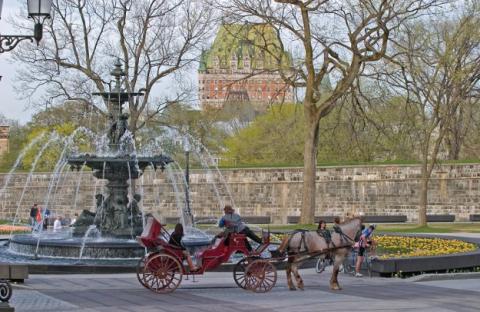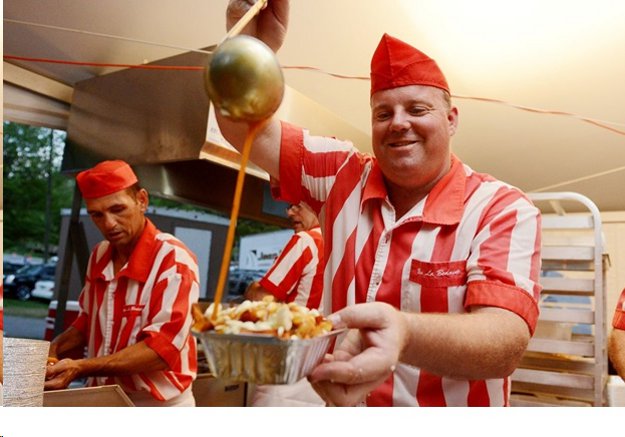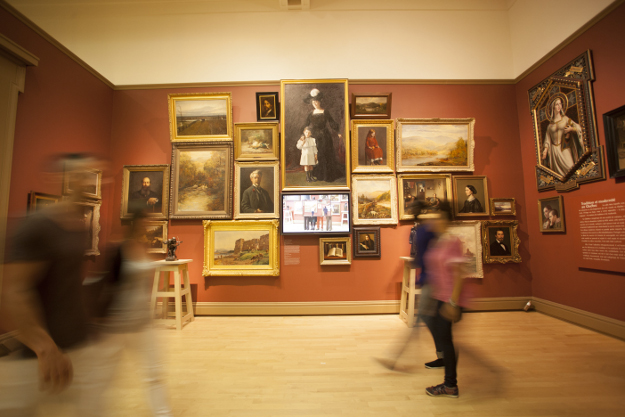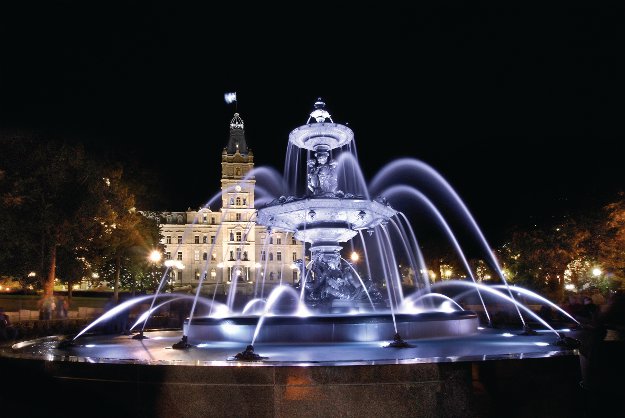Secrets of Quebec City

Tucked inside centuries’-old fortress walls high above the St. Lawrence River, the capital of La Belle Province beckons with Old World charm. It’s nearly impossible to miss its most famous sights, including the iconic Château Frontenac hotel rising high above the St. Lawrence River in belle-époque splendor; the historic railroad hotel sparkles after a multimillion restoration. And the neighboring Plains of Abraham is where the British won Québec from the French in a pivotal battle in 1759. But there are beguiling secrets in this fair city, waiting to be discovered. Come along for a journey through lesser-known Québec City.
Begin at the lovely Fontaine de Tourney, splashing in front of Parliament on Avenue Honoré Mercier. It may look just like a fountain, with its nimble figures and stunning masks, but it’s truly a centerpiece of Québecois life and a source of local pride. Originally gracing a broad avenue in sister city Bordeaux, between 1857 and 1960, and a gold medal recipient at the 1855 Paris World’s Fair, the fountain was discovered in 2003 at a Parisian antiques flea market by Peter Simons. He, of course, is the head of the Simons department store, which his family established in the Old City in 1840. The second he laid eyes on it he knew it would be the perfect gift to his native city on its 400th anniversary in 2007. In summer, the fountain’s 43 water jets send cooling sprays of water over cheery, multihued flowers. In winter, Bonhomme, the beloved Winter Carnival ambassador, resides in his ice palace just across the street. Every night, dramatic lighting spotlights the fountain, enticing lovers for a leisurely stroll and an excuse to stop and canoogle. Beyond the fountain rises the imposing Parliament building, dubbed the Petit Louvre for its magnificent Second Empire architecture. Québécois know anyone can enter inside to dine in the fabulous beaux arts restaurant; expect Québécois specialties, perhaps pea soup, tourtière (traditional meat pie), and/or sugar pie.

Next, seek out Rue du Trésor, a picturesque pedestrian alleyway filled with local art that feels every bit like a lost Parisian corner; indeed, locals call this charming ruelle “Little Montmartre” for its resemblance to the bohemian Place du Tertre. Established in the 1960s by two fine art students, the open-air gallery now boasts more then 30 artists who showcase everything from oil paintings to etchings to watercolors. After admiring the art and perhaps buying a little something to bring home, round out your artsy excursion by sipping cappuccino in a nearby café.
For more art, head to the newly renovated and expanded Musée National des Beaux-Arts du Québec. Built around the city’s old prison, this first-rate art museum on the Plains of Abraham is devoted to Québecois artists, ranging from early French colonists to modern-day abstract artists. While its permanent collection is outstanding and worth a trip in itself (entire halls are devoted to foremost 20th-century artists Jean-Paul Lemieux and Jean-Paul Riopelle), take special note of its visiting exhibitions. There’s always something spectacular going on; a much-talked-about exhibit showcasing Post-impressionist Pierre Bonnard opens October 6, 2016, for example.

The museum itself just recently expanded, with an über-modern design in the Pierre Lassonde Pavilion featuring stacked glazed blocks in varied sizes, complete with protruding diagonal cuboid staircase connecting the upper two galleries. Open and airy, the new wing—revolutionary in the architecture world just as Gehry’s Guggenheim was in Bilbao—it strives to meld the natural beauty of the National Battlefields Park just outside its door on one side with the bustling urban center on the other, thereby providing a gateway between city and nature (as well as between architecture and landscape, between old and new … there’s lots of symbolism here).
Until November, enjoy the rare experience of entering through one of only seven Holy Doors in the world, and the only one in the Western Hemisphere. Notre-Dame de Québec in Old Québec once headed the world’s largest diocese, stretching from the St. Lawrence River to the Gulf of Mexico. To celebrate its 350th anniversary in 2013, a Holy Door was constructed—and closed shut with mortar and cement until 2025. That is, until Pope Francis designated a special Jubilee Year of Mercy, between December 2015 and November 2016, during which time the bronze door has been reopened. Anyone expressing good will is welcome to enter. Believers understand that passing through the door represents an inward search of spiritual discovery, a way of facing our personal problems head on, but with the assistance of God.
The promenade in front of the Château Frontenac hotel offers wonderful views of the St. Lawrence River. But few know you can actually get out on the river for the best views of all, for a very little price. All you have to do is hop on the Québec-Lévis Ferry with fellow commuters. It’s not about the ending point (there’s not really much to see over there), but the journey. As you slowly churn across the river, Old Québec rises above the river, framed by the majestic Château Frontenac. It’s beautiful any time of day, but in late afternoon, as the sun sets behind the historic buildings, the scene takes on an ethereal golden glow. Simultaneous ferries leave every 30 minutes from either side of the river—as soon as you reach the other side, follow the crowd through the terminal and immediately re-embark onto the ferry. You will, of course, need a round-trip ticket.
Québec City is famed for its singular cuisine. Don’t leave without trying the indigenous poutine, a decadent dish mixing French fries, cheese curds, and light brown gravy; the place to try it is Ashton, a local chain with 24 locations around the city. But for something truly special, reserve a table at Ciel!, a rotating bistro atop La Concorde hotel high above Quebec City. Sitting beside the floor-to-ceiling window, you alternately dine on exquisite regional cuisine and take in the changing views. Far below you’ll pick out the miniature Château Frontenac, the majestic Grande-Allée, and the Plains of Abraham, with the St. Lawrence snaking past it all. As night falls and the city illumes, look for the grain silos on the Outer Harbor – glowing with an installation of different colored lights, fittingly titled “Aurora Borealis.” Order a chilly glass of ice cider (another one of Québec’s unsung treasures) and toast yourself for uncovering Québec’s secret side.

Author Bio:
Barbara Noe Kennedy worked as an editor at the National Geographic Book Division for more than 20 years. She has written four books, and her writings have also been published in National Geographic, The Daily Telegraph, and the Los Angeles Times, among other publications. She is a contributing writer at Highbrow Magazine.
For Highbrow Magazine






























































































































































































































































































































